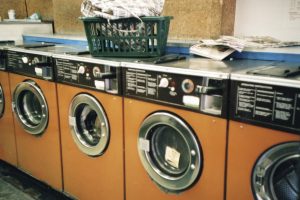Over the past few years, there has been a global effort by scientists to develop a treatment that is able to limit the pollution of microplastics into marine environments. Fortunately, Marthe Kiendrebeogo and her research team may have found a solution. They discovered that they were able to effectively break down a sample of microplastics through anodic oxidation.
Now you may ask, what are microplastics?
Microplastics are pieces of plastic less than 5 mm in length. The three main sources of microplastics are the breakdown of larger plastics, cosmetics and laundry washes. All three of these sources have contaminated marine environments all over the Earth. To put this into perspective, a recent study has suggested that there are approximately 12-125 trillion microplastics floating in the oceans today.

A collection of mainly plastic material that washed ashore. Plastics, such as a water bottle, can be degraded and become a source of microplastics.
Credit: unsplash.com/john_cameron
The Effect of Microplastics on Life:
The buildup of microplastics in aquatic life through ingestion can lead to toxic (harmful) effects. These effects were studied by a different research team led by Dr. Kogel where they found the toxic effects included infertility, decreased growth rate, shorter lifespans, and internal damage. Furthermore, microplastics are known to travel up the food chain and eventually reach humans. There is currently a lack of information regarding the effects of microplastics in humans, but several studies are in progress.
 For those interested, Drs. Sarah Dudas and Peter Ross show the presence of microplastics in aquatic life in this video.
For those interested, Drs. Sarah Dudas and Peter Ross show the presence of microplastics in aquatic life in this video.
And now to the study:
With the background information out of the way, I’m going to explain how Marthe Kiendrebeogo and her team created a potential solution to tackle the rising issue of microplastics.
This research team found that the process of anodic oxidation breaks down microplastics efficiently. Anodic oxidation involves a lot of chemistry, but the main thing to know is that it creates hydroxyl radicals (OH-) without adding extra chemicals into the water. These hydroxyl radicals are very good at attacking and breaking down microplastics. The full mechanism is in the article for those interested. This study found that with their proposed mechanism, 58 ± 21% of microplastics broke down in 1 hour which reached approximately 80% in 3 hours.
I think that the most significant result in this study is that 58 ± 21% of polystyrene was degraded in 1 hour because an hour is close to the time of a normal laundry cycle. A laundry cycle puts a lot of stress on clothing fabrics which leads to the release of microplastics. In fact, a recent study has estimated that 35% of microplastics in oceans can be contributed to laundry. Thus, this mechanism would be very effective at decreasing the amount of microplastic production if it was implemented into laundry machines.

The addition of this treatment into laundry machines can limit the number of microplastics released at the initial source.
Credit: unsplash.com/scottsweb
Based on the results of this study, the future of treatments for microplastics sounds more promising. Nevertheless, there still is a lot of work to be done. The next step for this promising treatment would be to test the effectiveness of the proposed mechanism on samples consisting of other microplastics.
-Karnvir Dhillon
